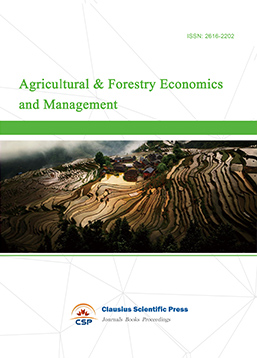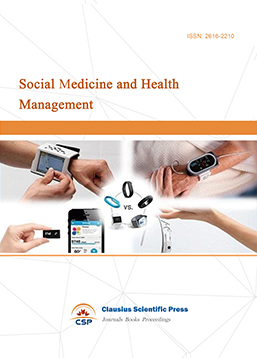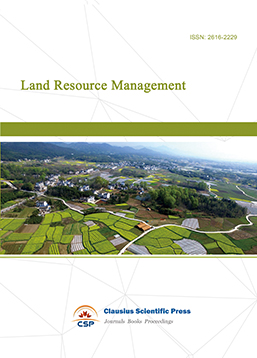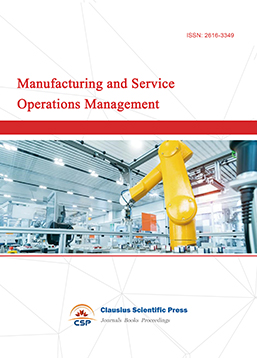Innovation Model of Civil Construction Engineering Management Based on Construction Concept
DOI: 10.23977/ieim.2023.060709 | Downloads: 242 | Views: 2428
Author(s)
Wenzheng Liu 1
Affiliation(s)
1 Department of Civil Engineering, Yichun University, Yichun, Jiangxi, 336000, China
Corresponding Author
Wenzheng LiuABSTRACT
Civil engineering is a complex and huge system engineering, which requires collaborative cooperation involving multiple fields and specialties. The traditional civil engineering management model has some difficulties and challenges in project schedule control, quality management and cost control. In order to improve the management effect and project performance of civil construction engineering, it is necessary to introduce an innovative management model, that is, an innovative model based on construction concepts. The analysis of the innovative model of civil construction engineering management based on the construction concept in this paper aims to optimize resource scheduling, improve the accuracy and implementability of construction plans by introducing advanced technologies and methods, thereby improving project management efficiency, enhancing project quality control, reducing costs and risks, and facilitate information sharing and collaboration. According to the experimental results, it can be known that the performance of the innovative model of civil construction engineering management based on the construction concept is also very good, and the effects in project schedule control, quality management effect, and cost control are all good. The innovative model based on the construction concept has promoted the transformation and progress of the management concept of civil construction engineering, and stimulated the innovation vitality of the industry. This not only helps to improve the competitiveness of the industry, but also provides a practical basis and reference experience for technical research and development in related fields.
KEYWORDS
Civil and Construction Engineering Management, BIM Technology, Construction Concept, Internet of Things Technology, Innovation ModelCITE THIS PAPER
Wenzheng Liu, Innovation Model of Civil Construction Engineering Management Based on Construction Concept. Industrial Engineering and Innovation Management (2023) Vol. 6: 62-70. DOI: http://dx.doi.org/10.23977/ieim.2023.060709.
REFERENCES
[1] Meng Shumei. "Civil Engineering Management and Engineering Cost Control." Engineering Technology Research 5.13 (2020): 162-163.
[2] Gao Shuo, Han Zhenyan and Liu Di. "Analysis of Risk Management in Civil and Construction Engineering." Chinese Science and Technology Periodical Database (Full Text) Natural Science 02 (2018): 00200-00200.
[3] Xu Jiao. "Innovative Research on Modern Civil Engineering Construction Management." International Architecture 5.1 (2023): 170-172.
[4] Li Haiwei. "Application of project management in civil engineering construction." Smart City 6.09 (2020): 82-83.
[5] Bsisu K. Al-Deen. "The impact of COVID-19 pandemic on Jordanian civil engineers and construction industry." International Journal of Engineering Research and Technology 13.5 (2020): 828-830.
[6] Vemury Chandra Mouli, et al. "A holistic approach to delivering sustainable design education in civil engineering." International Journal of Sustainability in Higher Education 19.1 (2018): 197-216.
[7] Soga Kenichi and Linqing Luo. "Distributed fiber optics sensors for civil engineering infrastructure sensing." Journal of Structural Integrity and Maintenance 3.1 (2018): 1-21.
[8] Conrad Susan. "The use of passives and impersonal style in civil engineering writing." Journal of Business and Technical Communication 32.1 (2018): 38-76.
[9] Sun Meng, et al. "Advanced signal processing methods for ground-penetrating radar: Applications to civil engineering." IEEE Signal Processing Magazine 36.4 (2019): 74-84.
[10] Dede Tayfun, et al. "Usage of optimization techniques in civil engineering during the last two decades." Curr. Trends Civ. Struct. Eng 2.1 (2019): 1-17.
[11] Try Sokkeang, et al. "Virtual reality application to aid civil engineering laboratory course: A multicriteria comparative study." Computer Applications in Engineering Education 29.6 (2021): 1771-1792.
[12] Saleh Noor Shahariah, and Siti Fatimah Murtaza. "English language use in Malaysian government and private civil engineering workplaces." International Journal of Education and Literacy Studies 6.3 (2018): 84-91.
[13] Zhang Jingxiao, Xie Haiyan, and Hui Li. "Improvement of students problem-solving skills through project execution planning in civil engineering and construction management education." Engineering, Construction and Architectural Management 26.7 (2019): 1437-1454.
[14] Manzini Nicolas, et al. "Performance analysis of low-cost GNSS stations for structural health monitoring of civil engineering structures." Structure and Infrastructure Engineering 18.5 (2022): 595-611.
[15] Posselt Julie, Kamaria B. Porter, and Aurora Kamimura. "Organizational pathways toward gender equity in doctoral education: Chemistry and civil engineering compared." American Journal of Education 124.4 (2018): 383-410.
[16] Afzal Anam, Ayesha Kausar, and Muhammad Siddiq. "Role of polymeric composite in civil engineering applications: A review." Polymer-Plastics Technology and Materials 59.10 (2020): 1023-1040.
[17] Drochytka Rostislav, et al. "Study of possibilities of using special types of building and demolition waste in civil engineering." Periodica Polytechnica Civil Engineering 64.1 (2020): 304-314.
[18] Al-Fakih Amin, Bashar S. Mohammed, and M. S. Liew. "Tires rubber as a useable material in civil engineering applications: An overview." Int. J. Adv. Res. Eng. Technol 11.11 (2020): 315-325.
[19] Shamim Arslan, et al. "Applications of nano technology in civil engineering: a review." International Journal of Strategic Engineering (IJoSE) 1.1 (2018): 48-64.
[20] Obradovic Dino. "Review of nature-inspired optimization algorithms applied in civil engineering." Electronic Journal of the Faculty of Civil Engineering Osijek-e-GFOS 9.17 (2018): 74-88.
| Downloads: | 27006 |
|---|---|
| Visits: | 812421 |
Sponsors, Associates, and Links
-
Information Systems and Economics

-
Accounting, Auditing and Finance

-
Tourism Management and Technology Economy

-
Journal of Computational and Financial Econometrics

-
Financial Engineering and Risk Management

-
Accounting and Corporate Management

-
Social Security and Administration Management

-
Population, Resources & Environmental Economics

-
Statistics & Quantitative Economics

-
Agricultural & Forestry Economics and Management

-
Social Medicine and Health Management

-
Land Resource Management

-
Information, Library and Archival Science

-
Journal of Human Resource Development

-
Manufacturing and Service Operations Management

-
Operational Research and Cybernetics


 Download as PDF
Download as PDF